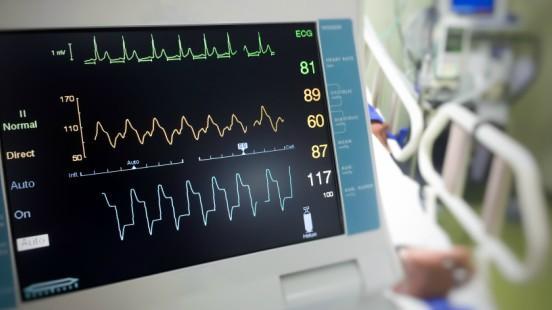Understanding ECG in Medical Practice

Electrocardiography (ECG or EKG) is a non-invasive medical test that records the electrical activity of the heart over a period of time. It is a valuable tool used by healthcare professionals to diagnose various heart conditions and monitor the heart's health. In this article, we will explore the meaning of ECG in medical practice, common tools and methods used for ECG monitoring, and introduce PulseNexa's ElectroPulse Health Watch as a modern and convenient option for ECG monitoring.
What is ECG and What Does it Show?
An ECG records the electrical activity of the heart as it contracts and relaxes. The electrical impulses generated by the heart are detected by electrodes attached to the skin, which are then recorded as waves on paper or digitally. These waves, known as the ECG waveform, provide valuable information about the heart's rhythm and electrical conduction.
The ECG waveform consists of several components, including the P wave, QRS complex, and T wave. Each of these components represents a different phase of the heart's electrical activity. By analyzing the ECG waveform, healthcare professionals can identify abnormal heart rhythms (arrhythmias), conduction abnormalities, and signs of heart disease.
Common Tools and Methods for ECG Monitoring
There are several tools and methods used for ECG monitoring, ranging from traditional ECG machines to modern wearable devices. Some common tools include:
-
Traditional ECG Machines: These are stationary machines found in hospitals and clinics. They require the placement of multiple electrodes on the chest, arms, and legs to record the ECG waveform. The results are then interpreted by healthcare professionals.
-
Holter Monitor: A Holter monitor is a portable device worn by the patient for 24 to 48 hours to continuously record the heart's electrical activity. It is useful for detecting intermittent arrhythmias and other heart rhythm abnormalities.
-
Event Monitor: Similar to a Holter monitor, an event monitor is a portable device worn by the patient. However, it is used for longer periods of monitoring, typically up to 30 days. It is activated by the patient when they experience symptoms, allowing for the recording of specific events.
-
Wearable ECG Devices: These are wearable devices, such as smartwatches, that can continuously monitor the heart's electrical activity. They are convenient for long-term monitoring and can provide real-time data to the user.
PulseNexa's ElectroPulse Health Watch
PulseNexa's ElectroPulse Health Watch is a state-of-the-art smartwatch that offers ECG monitoring capabilities. It is equipped with advanced sensors and algorithms that can accurately record and analyze the heart's electrical activity. The watch is easy to use and provides real-time ECG data to the user, allowing for early detection of arrhythmias and other heart abnormalities.
The ElectroPulse Health Watch is an excellent option for individuals who require regular ECG monitoring, such as those with heart conditions or risk factors for heart disease. Its convenience and accuracy make it a valuable tool for maintaining heart health.
In conclusion, ECG monitoring plays a crucial role in diagnosing and monitoring heart conditions. With advancements in technology, tools like PulseNexa's ElectroPulse Health Watch make ECG monitoring more accessible and convenient than ever before. By understanding the meaning of ECG and utilizing modern monitoring tools, individuals can take proactive steps to maintain their heart health.


